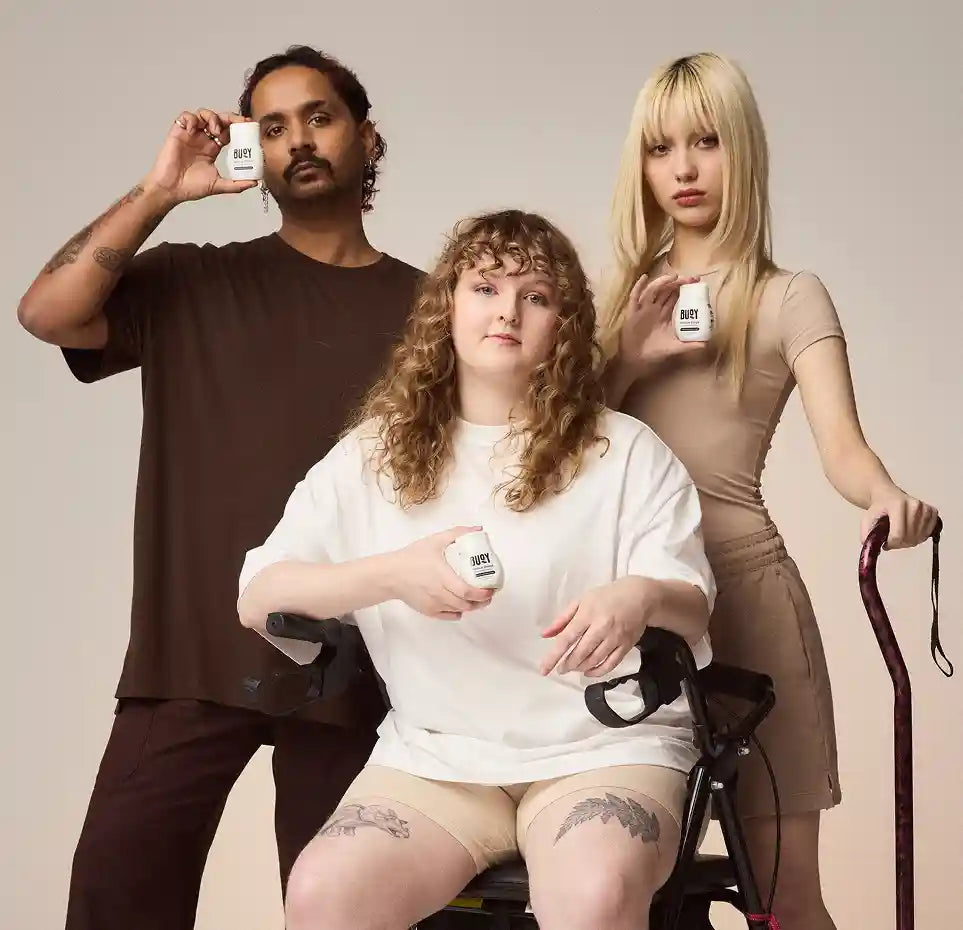
Can POTS Go Into Remission? What the Latest Research Tells Us
If you have POTS, you’ve likely wondered: How long does it take to recover from Postural Orthostatic Tachycardia Syndrome? Can POTS go into remission? How long does it take?
Essential Takeaways:
- POTS Recovery is Possible: Research shows that many people with POTS experience significant improvement over time, with some going into remission. While individual experiences vary, studies suggest most patients see major symptom improvements within 1-5 years.
- How to Put POTS in Remission: Getting diagnosed early and making consistent lifestyle changes can improve your chances of achieving remission. Gradual exercise programs, proper hydration, and stress management techniques have all been shown to help manage symptoms and lead to better long-term outcomes.
In this guide, we’ll explore what current research tells us about POTS remission and recovery to help you understand what might be possible when living with POTS. We’ll also touch on Postural Tachycardia Syndrome treatment options that may help in achieving remission.
- Understanding POTS Remission: What Does It Mean?
- Factors That Influence Recovery from POTS
- What Does the Research Say About POTS Recovery?
- Can Lifestyle Changes Improve Your Chances of Recovery?
- Managing Expectations: What to Know About POTS Remission
- Hope for POTS Patients: Understanding Remission and Recovery
Understanding POTS Remission: What Does It Mean?
Before we get into the research, let’s talk about what remission means when it comes to POTS recovery. Remission is when your symptoms get a lot better, often to the point where they have minimal impact on daily life (1).
Remission vs. Cure
It’s important to know that remission isn’t a cure, as there is no cure for POTS. Even in remission, you may need to manage your condition and be aware of potential symptom flare-ups (1).
Remission Looks Different for Everyone
For people with POTS, remission can look different from person to person. Some might have long stretches of time where they feel pretty good, while others may have shorter periods of relief (1,2).
POTS isn’t a one-size-fits-all condition, and your experience will likely be unique to you. Find out how to create your own personalized POTS Management Plan in our comprehensive guide.
Factors That Influence Recovery from POTS
Several factors can impact the likelihood of achieving POTS remission, including:
- Early diagnosis
- Consistent treatment
- Lifestyle modifications
- Underlying health conditions and comorbidities
- Age of onset
- Severity of symptoms
Research suggests that early intervention and consistent management of your POTS symptoms can play a big role in improving outcomes for those with this condition (1).
Effective Postural Tachycardia Syndrome treatment, which may include a combination of medications, lifestyle changes, and physical therapy, can significantly impact the timeline and extent of your recovery (3).
What Does the Research Say About POTS Recovery?
So, how long does it take to recover from Postural Orthostatic Tachycardia Syndrome? While individual experiences with POTS recovery can vary widely, studies have provided some insights into remission rates:
Adolescent Recovery Insights
A 2016 Journal of Pediatrics study found that about 86% of adolescents with POTS reported improvement in symptoms over an average follow-up period of 5 years, with 19% experiencing complete resolution of symptoms (4).
This suggests a hopeful outlook for younger people with POTS, showing that symptoms can significantly decrease or even disappear as they grow.
General POTS Recovery Trends
Research indicates that many people diagnosed with Postural Orthostatic Tachycardia Syndrome find significant relief from symptoms within the first 1 or 2 years after diagnosis, and the majority improve within 5 years.
However, some may continue to have symptoms for longer periods (5).
Long-Term Study Findings
A long-term follow-up study published in 2012 found that 60% of POTS patients reported improvement in symptoms over an average of 5 years, with some achieving complete remission (6).
Interpreting These Studies
It’s important to note that these studies have limitations. Many are based on relatively small sample sizes, and we don’t have much long-term follow-up data yet. Some studies rely on self-reported symptoms, which can be subjective.
Also, since POTS can look very different from person to person, these findings might not necessarily apply to everyone. We still need more research to get a clearer picture of the long-term outlook for people with POTS.
Can Lifestyle Changes Improve Your Chances of Recovery?
While there is no guaranteed path to remission, certain lifestyle changes may increase your chances of improving your POTS symptoms.
Gradual Exercise Program
A carefully structured and gradual exercise program, often starting with recumbent exercises, can improve POTS symptoms over time. Learn more about how to exercise with POTS in our Guide to Safe Workouts.
Hydration and Salt Intake
Drinking more fluids and increasing your salt intake can help boost your blood volume. This is super important because low blood volume often makes POTS symptoms worse.
Sleep Hygiene
Prioritizing good sleep habits can help manage fatigue and other POTS symptoms. Learn how to improve your sleep quality with our guide to POTS and Sleep.
Stress Management
Techniques like mindfulness, meditation, and cognitive-behavioral therapy may help manage the stress that can worsen POTS symptoms.
Dietary Adjustments
Some patients find relief by adjusting their diet, such as eating smaller, more frequent meals or avoiding trigger foods. To learn how to manage your symptoms through nutrition, check out our guide on Healthy High-Sodium Snacks for POTS.
Making these lifestyle changes isn’t always easy, but many POTS patients find that they can significantly improve their quality of life over time (3). Everyone’s experience with POTS recovery is unique, so it may take some trial and error to find the combination of strategies that works for you.

Finding strategies that work for you, like working out with friends, can make managing POTS more enjoyable.
Managing Expectations: What to Know About POTS Remission
While the possibility of remission offers hope, it’s important to manage your expectations. Here’s why:
- Progress is often gradual and may have ups and downs.
- Even in remission, ongoing management may be necessary.
- POTS management is highly individualized. What works for one person may not work for another.
- Remission doesn’t mean symptoms can’t return—ongoing care is important (1).
While remission is a goal to work toward, focusing on improving your day-to-day quality of life is equally important. Stay patient with yourself, celebrate small improvements, and keep working closely with your healthcare team to find the best management strategies for you.
Signs You’re Entering Remission
Signs of entering remission may include a reduction in symptom frequency and intensity, improved ability to perform daily activities, and better overall quality of life. Regular check-ins with your healthcare provider can help you track your progress toward remission.
Finding the Right Treatment Approach
Finding the right Postural Tachycardia Syndrome treatment approach may take time and require some trial and error. As you work toward recovery, remember that each small improvement is a step forward.
Celebrate your progress and continue collaborating closely with your healthcare team—it’s worth the effort.
Hope for POTS Patients: Understanding Remission and Recovery
While living with POTS can be challenging, current research offers hope. Many people with POTS do experience significant improvement over time, with some even experiencing remission.
Stay Proactive and Celebrate Wins
Stay proactive in your POTS management, remain open to adjusting your approach as needed, and celebrate the small victories along the way. With ongoing research and advancements in treatment, the outlook for those with POTS continues to improve.
The Road to Remission
While the road to remission may be long, many people with POTS find ways to feel better and even thrive with this chronic condition. Stay hopeful, stay informed, and keep working with your healthcare provider toward better health.
Explore More POTS Resources
To learn more about managing POTS and staying up-to-date on the latest information, be sure to check out Buoy’s POTS guides. These resources cover a wide range of topics related to POTS and can help you better understand and manage your symptoms.

References:
-
Mayo Clinic. (2010). Is There a Cure for POTS and How Can Symptoms Be Managed Effectively? Retrieved from https://newsnetwork.mayoclinic.org/discussion/though-no-cure-for-pots-symptoms-can-often-be-effectively-managed/
-
National Institute of Neurological Disorders and Stroke. (Reviewed July 19, 2024). Postural Tachycardia Syndrome (POTS). Retrieved from https://www.ninds.nih.gov/health-information/disorders/postural-tachycardia-syndrome-pots
-
Cleveland Clinic. (2022). Postural Orthostatic Tachycardia Syndrome (POTS). Retrieved from https://my.clevelandclinic.org/health/diseases/16560-postural-orthostatic-tachycardia-syndrome-pots
-
Bhatia, R., Kizilbash S. J., Ahrens, S. P., Killian, J. M., Kimmes, S. A., Knoebel, E. E., Muppa, P., Weaver, A. L. & Fischer, P. R. (2016). Outcomes of Adolescent-Onset Postural Orthostatic Tachycardia Syndrome. Journal of Pediatrics:149-53. Retrieved from https://pubmed.ncbi.nlm.nih.gov/26979650/
-
Zhao, S. & Tran, V. H. (Updated August 7, 2023). Postural Orthostatic Tachycardia Syndrome. In: StatPearls. Treasure Island (FL): StatPearls Publishing. Retrieved from https://www.ncbi.nlm.nih.gov/books/NBK541074/
- Kimpinski, K., Figueroa, J. J., Singer, W., Sletten, D. M., Iodice, V., Sandroni, P., Fischer, P. R., Opfer-Gehrking, T. L., Gehrking, J. A. & Low, P. A. (2012). A Prospective, 1-Year Follow-Up Study of Postural Tachycardia Syndrome. Mayo Clinic Proceedings, 87(8), 746–752. Retrieved from https://www.ncbi.nlm.nih.gov/pmc/articles/PMC3538485/





